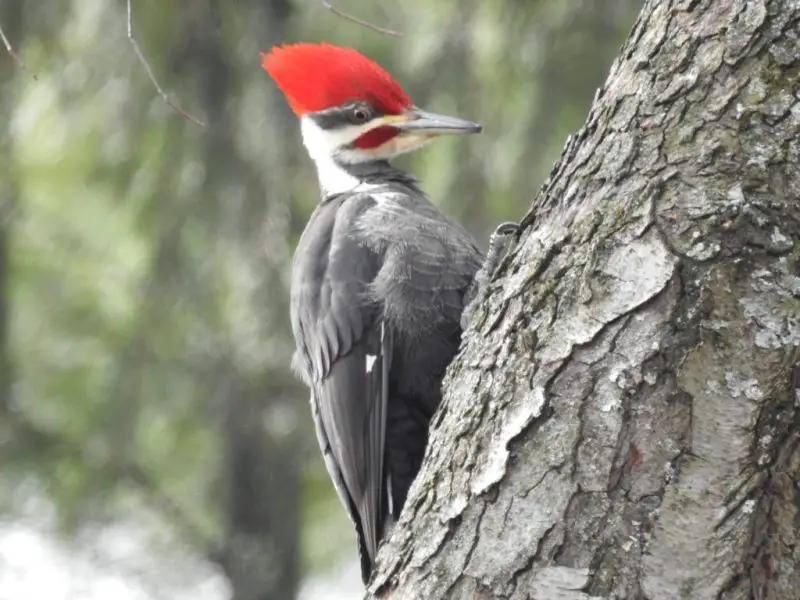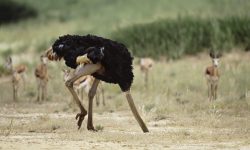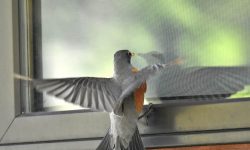Woodpeckers are among the most fascinating and easily recognizable birds found in Ohio. With their distinctive drumming sounds, vibrant plumage, and unique behaviors, these birds play an important role in the state’s forest ecosystems. This comprehensive guide will explore everything you need to know about woodpeckers in Ohio — from identifying the species and understanding their calls to learning about their nesting habits and conservation status.
Introduction to Woodpeckers in Ohio

Ohio boasts a rich variety of woodpecker species, each exhibiting unique traits and fascinating adaptations that have helped them thrive in diverse habitats throughout the state. These birds play a crucial ecological role by helping to regulate insect populations, especially those that could otherwise harm trees and forests. Beyond their environmental importance, woodpeckers also contribute to the ecosystem by creating nesting cavities. These holes not only serve as homes for themselves but are often later used by other birds, mammals, and various wildlife, supporting overall biodiversity.
For bird watchers, nature enthusiasts, and photographers, woodpeckers present an engaging subject. Their distinctive behaviors, striking plumage, and unmistakable drumming sounds make spotting them a memorable experience. Whether tapping away on tree trunks or soaring between branches, woodpeckers’ presence adds lively energy to Ohio’s woodlands and suburban landscapes.
This article aims to guide you through the fascinating world of woodpeckers in Ohio. You will learn about the most common species found throughout the state, and gain insight into their distinctive physical features and intriguing behaviors. Additionally, you will discover how to recognize the unique calls and drumming patterns that woodpeckers use to communicate, mark territory, and attract mates.
Understanding their nesting habits and breeding behaviors reveals how these birds reproduce and raise their young in Ohio’s various environments. Moreover, the article offers practical advice on how you can attract woodpeckers to your own backyard and create a supportive habitat that encourages their presence.
Lastly, it highlights the conservation challenges woodpeckers face due to habitat loss and environmental changes, along with ways that individuals and communities can contribute to their protection. Through this comprehensive overview, you will be better equipped to appreciate, identify, and support these remarkable birds in Ohio.
Common Woodpecker Species in Ohio
Ohio is home to a variety of woodpecker species, some of which remain throughout the year while others appear seasonally. These birds can be found in diverse habitats, ranging from dense forests to suburban backyards. Below are some of the most common woodpeckers you are likely to encounter in Ohio.
Downy Woodpecker (Picoides pubescens)
The Downy Woodpecker is the smallest woodpecker species in Ohio. It is easily recognizable by its black and white plumage and relatively short bill, which differentiates it from other woodpeckers. These little birds are frequent visitors to backyard feeders and can be seen actively foraging on tree trunks and branches in forests, parks, and suburban areas. Their presence is often announced by sharp drumming sounds as they search for insects hidden beneath bark.
Hairy Woodpecker (Picoides villosus)
Similar in appearance to the Downy Woodpecker but noticeably larger, the Hairy Woodpecker features a longer bill adapted for deeper probing into wood. It tends to prefer mature forests and wooded parks where it can find ample food sources. The strong pecking noise made by the Hairy Woodpecker is often heard before the bird itself is spotted, making its presence known across Ohio’s woodlands.
Red-bellied Woodpecker (Melanerpes carolinus)
Despite its name, the Red-bellied Woodpecker is most notable for its bright red cap and nape. This species is very common throughout Ohio and is well known for its loud calls and bold behavior. It often dominates backyard feeders and woodland areas, aggressively defending its territory. The striking red markings combined with its patterned black and white back make it easy to identify.
Northern Flicker (Colaptes auratus)
The Northern Flicker differs from most woodpeckers in its feeding habits as it often forages on the ground, hunting for ants, beetles, and other insects. Its brownish body covered with black spots, along with its barred wings, make it a distinctive sight. Northern Flickers can frequently be seen in open woodlands, parks, and even suburban lawns across Ohio.
Pileated Woodpecker (Dryocopus pileatus)
Ohio’s largest woodpecker, the Pileated Woodpecker, stands out due to its impressive size and vivid red crest. Known for its loud, ringing call, this bird creates large rectangular holes in trees while excavating for insects or making nesting cavities. It prefers mature forests and wooded areas but occasionally ventures into suburban locations with large trees. Observing a Pileated Woodpecker in action is a dramatic and memorable experience for bird watchers.
Red-headed Woodpecker (Melanerpes erythrocephalus)
The Red-headed Woodpecker is striking with its completely red head, contrasted against a white body and black wings. It is often found in open woodlands and farmland edges where it feeds on insects, fruits, and nuts. This bold and colorful woodpecker is a charismatic species that adds vibrant splashes of color to Ohio’s bird communities.
Physical Characteristics of Ohio Woodpeckers
Woodpeckers found in Ohio display a fascinating variety of physical traits that enable them to thrive in their specific ecological niches. From their size differences to unique adaptations, these characteristics are key to their survival and efficiency as specialized birds.
Size and Plumage
The size of woodpeckers in Ohio varies significantly, ranging from the tiny Downy Woodpecker, which measures only about 6 to 7 inches in length, to the large and imposing Pileated Woodpecker that can grow up to 19 inches long. This size difference reflects their different hunting styles and habitats. Plumage patterns also differ widely across species, typically featuring a blend of black, white, red, and brown tones. These colors not only aid in camouflage within wooded environments but also help bird watchers and researchers distinguish between species. For instance, the bright red crest of the Pileated Woodpecker contrasts sharply with the mottled black and white feathers of the Hairy Woodpecker, making each species visually distinct.
Adaptations for Pecking
Woodpeckers possess a remarkable set of physical adaptations that allow them to repeatedly peck into hard tree bark without causing injury to themselves. Their beaks are strong and shaped like chisels, perfectly designed to drill into wood to access insects beneath the surface. The skull of a woodpecker is specially reinforced, acting as a natural shock absorber that protects the brain from the intense impacts generated during pecking.
Their neck muscles are highly developed and powerful, providing the force needed to hammer rapidly and repeatedly on tree trunks. Additionally, woodpeckers have stiff tail feathers that serve as a supportive brace, helping them maintain balance and stability while clinging vertically to trees. Another fascinating adaptation is their long, sticky tongue, which can extend far beyond the tip of the beak to extract insects hiding deep within crevices and tunnels made in the wood.
Together, these adaptations make woodpeckers among the most specialized and efficient bird species in Ohio’s forests and woodlands.
Understanding Woodpecker Calls and Drumming
Woodpeckers are perhaps best known for their unique drumming behavior, which involves rapid pecking on hollow or resonant surfaces. This drumming serves as an important means of communication among these birds, playing a key role in their social interactions and breeding rituals.
Why Do Woodpeckers Drum?
Drumming is a versatile behavior that fulfills several crucial purposes. Primarily, it acts as a way for woodpeckers to mark and defend their territory, sending clear signals to other woodpeckers to stay away. During the breeding season, males use drumming as a way to attract potential mates, broadcasting their presence and fitness through the rhythm and intensity of their taps. Beyond these, drumming also helps communicate status within a local population, allowing woodpeckers to establish social hierarchies without direct confrontation.
Common Woodpecker Calls in Ohio
In addition to drumming, woodpeckers use vocal calls to communicate. Each species has its own distinctive sounds that can help bird watchers identify them even when the birds are hidden in dense foliage. The Downy Woodpecker, for instance, is known for its high-pitched “pik” or “peek” sounds, which are often sharp and quick. The Hairy Woodpecker’s calls tend to be sharp and repeated, resembling a series of “peek” notes. Meanwhile, the Red-bellied Woodpecker is famous for its loud, rolling calls that sound like “churr” or “kwirr,” making it one of the more vocal woodpeckers in Ohio.
The Northern Flicker differs with its loud, rhythmic “wicka-wicka” calls, which are easily distinguishable and often heard from open woodlands and suburban yards. The Pileated Woodpecker produces a loud, echoing “cuk-cuk-cuk” call that resonates through the forest, complementing its slow and deliberate drumming. Lastly, the Red-headed Woodpecker uses clear, sharp “chak” sounds to communicate, often in flight or while foraging.
How to Identify Woodpeckers by Their Drumming Patterns
Beyond vocalizations, woodpeckers can often be identified by their distinct drumming rhythms and speeds. Each species has developed characteristic drumming patterns that serve as auditory signatures. The Pileated Woodpecker, for example, drums slowly and with deliberate force, producing a steady, resonant beat that can carry a long distance. In contrast, the Downy Woodpecker drums much faster, delivering lighter and quicker taps that sound almost like a rapid tapping or rattling. Understanding these subtle differences in drumming allows bird watchers to not only detect woodpeckers but also to distinguish between species even without a clear view.
Nesting Habits and Breeding Behavior
Woodpeckers have fascinating nesting behaviors that reflect their unique adaptations and social structures. Understanding their nesting habits offers insight into how these birds thrive and reproduce in Ohio’s diverse habitats.
Nest Site Selection
Woodpeckers are cavity nesters, meaning they excavate their own nesting sites by pecking into dead or decaying trees. They tend to prefer softer wood, which makes the excavation process easier, but they also carefully select sites that offer protection from predators and harsh weather conditions. Often, woodpeckers will choose trees with some decay but that are still structurally sound enough to provide a safe home for their eggs and chicks. The height of the nest can vary, but it is typically located high enough to reduce the risk of ground predators.
Nest Construction
Both the male and female woodpecker share the task of excavating the nest cavity. This cooperative effort can take several weeks, as they chisel out a deep, secure hole inside the tree trunk or large branch. The inside of the nest is usually lined with soft wood chips created during the digging process, providing a comfortable environment for the eggs and later, the hatchlings. This effort not only creates a home for their young but often benefits other wildlife species later on, as abandoned woodpecker cavities are used by birds, mammals, and insects.
Breeding Season and Reproduction
In Ohio, most woodpecker species begin breeding in late spring and continue into early summer. The female typically lays between three and seven eggs per clutch. Both parents take turns incubating the eggs, which usually hatch after about two weeks. This shared responsibility continues after hatching, as both adults work together to feed and protect the chicks.
Fledging and Juvenile Behavior
After about three to four weeks, young woodpeckers leave the nest, a process called fledging. However, fledglings often remain close to the nesting site as they learn essential survival skills such as foraging and flying. During this time, juvenile woodpeckers have duller plumage compared to adults, a natural adaptation that helps reduce aggression from territorial adults while the young birds grow and mature.
Where to Spot Woodpeckers in Ohio
Knowing where to look is key to enjoying sightings of Ohio’s diverse woodpecker species. The state offers a variety of habitats that support healthy woodpecker populations throughout the year.
Best Habitats
Woodpeckers thrive in mature forests and wooded parks where large, old trees provide plenty of nesting and foraging opportunities. These environments offer dead or decaying trees, which are crucial for woodpeckers to excavate their nesting cavities and search for insects beneath the bark.
Wetlands with standing dead trees also serve as excellent habitats. Such areas often harbor abundant insect life and provide safe perching spots. Suburban neighborhoods can be surprisingly good places to spot woodpeckers, especially where old trees remain and backyard feeders attract insects and suet.
Agricultural areas that have scattered trees or woodlots are another important habitat. These trees act as islands of shelter and food in open farmland, attracting species such as the Red-headed Woodpecker and Northern Flicker.
Top Ohio Locations for Woodpecker Watching
Some of the best places in Ohio to observe woodpeckers include well-known parks and wildlife areas. Cuyahoga Valley National Park offers a mix of forested trails and open areas where various woodpecker species can be seen. Hocking Hills State Park is renowned for its rugged terrain and mature forests, providing excellent habitat for Pileated Woodpeckers and other species.
Shawnee State Forest, with its extensive woodlands and wetlands, is another hotspot for woodpecker activity. Bird enthusiasts often visit Magee Marsh Wildlife Area, especially during migration seasons, to catch glimpses of Northern Flickers and Red-bellied Woodpeckers.
Mohican State Park is also a popular destination, known for its rich biodiversity and accessible trails that make woodpecker spotting enjoyable and rewarding.
How to Attract and Support Woodpeckers in Your Backyard
Attracting woodpeckers to your backyard can provide wonderful opportunities for close-up birdwatching and contribute to local wildlife conservation. By understanding their needs and behaviors, you can create a welcoming environment that supports these fascinating birds.
Providing Food
Woodpeckers primarily feed on insects, especially those hidden beneath tree bark. To supplement their diet and attract them to your yard, you can offer suet, which is a favorite high-energy food, especially during colder months. Suet feeders placed in visible, safe locations can be very effective. Additionally, woodpeckers enjoy sunflower seeds and peanuts, which provide essential fats and proteins.
Planting native fruiting trees and shrubs also offers a natural food source. These plants attract insects and provide fruits or berries that woodpeckers may consume, especially in late summer and fall.
Creating Suitable Habitat
Woodpeckers rely heavily on dead or decaying trees to excavate their nesting cavities. Leaving standing dead trees or large branches in your yard whenever it is safe and feasible can encourage woodpeckers to nest nearby. If natural trees are scarce, installing artificial nest boxes specifically designed for woodpeckers can also provide valuable breeding sites.
Maintaining a mix of mature trees and open spaces supports their foraging behavior. Avoid removing too many old or dead trees, as these are critical components of a woodpecker-friendly habitat.
Avoiding Disturbance
During the breeding season, woodpeckers are particularly sensitive to disturbance. Minimizing loud activities or heavy yard work near known nesting sites helps reduce stress and increases the chances of successful breeding. Observing from a distance and keeping pets under control also contributes to a safe environment.
By providing food, suitable habitat, and respecting their space, you can play an important role in supporting woodpecker populations in Ohio and enjoy the lively presence of these remarkable birds in your own backyard.
Conservation Status and Challenges
Woodpeckers in Ohio face several conservation challenges that threaten their populations and habitats. Understanding these threats is essential for supporting efforts to protect these important birds and maintain ecological balance.
Threats to Woodpeckers in Ohio
One of the main threats to woodpeckers is habitat loss caused by urbanization and logging activities. As forests are cleared or fragmented, woodpeckers lose vital nesting and foraging areas, especially mature woodlands and old trees that provide natural cavities.
The decline of old-growth trees and standing dead wood further compounds the problem. These features are crucial for woodpeckers to excavate nests and find insect prey. Removing dead trees from parks and private lands reduces available nesting sites and food sources.
Pesticide use is another significant threat, as it reduces insect populations that woodpeckers rely on for food. A decrease in insect abundance can lead to poor nutrition and lower reproductive success for woodpeckers.
Conservation Efforts
To help woodpeckers thrive, sustainable forest management practices are being promoted. These include preserving mature trees, leaving dead wood in place, and minimizing habitat fragmentation.
Key habitats are protected within Ohio’s state parks, forests, and wildlife reserves, providing safe breeding and feeding grounds for woodpecker species. Conservation organizations and government agencies work together to maintain these areas.
Public education also plays a vital role in conservation. Raising awareness about the importance of dead wood in forest ecosystems encourages landowners and communities to support woodpecker-friendly practices, such as retaining snags and reducing pesticide use.
Conclusion
Woodpeckers in Ohio are captivating birds that provide essential ecological functions and add vibrant life to the state’s natural environments. Understanding their calls, habits, and habitat needs can enhance your birdwatching experience and contribute to their conservation. Whether you are hiking in Ohio’s forests or simply enjoying your backyard, keep an ear out for the rhythmic drumming and sharp calls of these remarkable birds.






